
Hi Gang…
When publishing companies like Motor Trend, Fawcett, and others had too much good information to share that wouldn’t fit in their magazine, they often produced specialized books that focused on a singular topic, and in 1956 Motor Trend released a Trend Book 130 on “Sports Cars.”
And of course they focused on our favorite fabulous fantastic fiberglass fabrications of fame.
Pictures of cars shown included the Woodill Wildfire, McCormack, a great rear 3/4 short of Hugh Jorgensen’s Victress S4 (check out those Star Trek headrests Mel Keys….that must have influenced the design of the Star Trek Enterprise).
Also included was a handsome Glasspar G2, two different Woodill Wildfires (study the pictures carefully you WW aficionados out there…) and the elusive, never seen, still missing, and wonderfully designed Sorrell 190 coupe.
What an assortment of cars!
Let’s check out what the article had to say. Then, we’ll do a “play by play” analysis of the content, the cars, and the charisma.
Off we go….

Check Out This Cool Wildfire – It’s Shown Twice In This Book. Those Are Fairly Rare Tailights From a ’54 Willys Aero. Most Willys Taillights Were Used From ’53 or Earlier.
Special Bodies:
Trend Book 130 (1956)
For those who feel adept mechanically, there’s another way to have your own sports car, i.e., by building it yourself. There are a number of firms, especially in Southern California, in the business of designing and building special fiberglass bodies that will fit nearly everything from an MG to a large stock car chassis.
Some of them also have designed and built special frames to fit these bodies, although it is a common practice to take a stock chassis and modify it slightly for the fitting of the fiberglass body. These home-assembly kits include the body, floorboard section, windshield, doors and panel ready for instruments.
Upon purchase of a kit, the enthusiast then procures a used car of his choice for the running gear, which includes the gas tank, instruments, wheels and brakes, steering gear, engine and transmission. He rebuilds any parts that he feels are necessary or substitutes new ones and then assembles his “sports car.”
Several hundred of these cars are now on the roads of America, some even being raced in sports car competition with commendable results. With a suitably stressed frame and a suspension system that gives good handling and cornering characteristics, a do-it-yourself car can be a real source of low-cost driving fun.
Some of the firms will build complete cars to the purchaser’s specifications, using the basic body kits that they have already designed and adding custom touches desired. Various body styles are shown in the photographs; body dimensions prices, and names and addresses of the firms are given in the accompanying table.
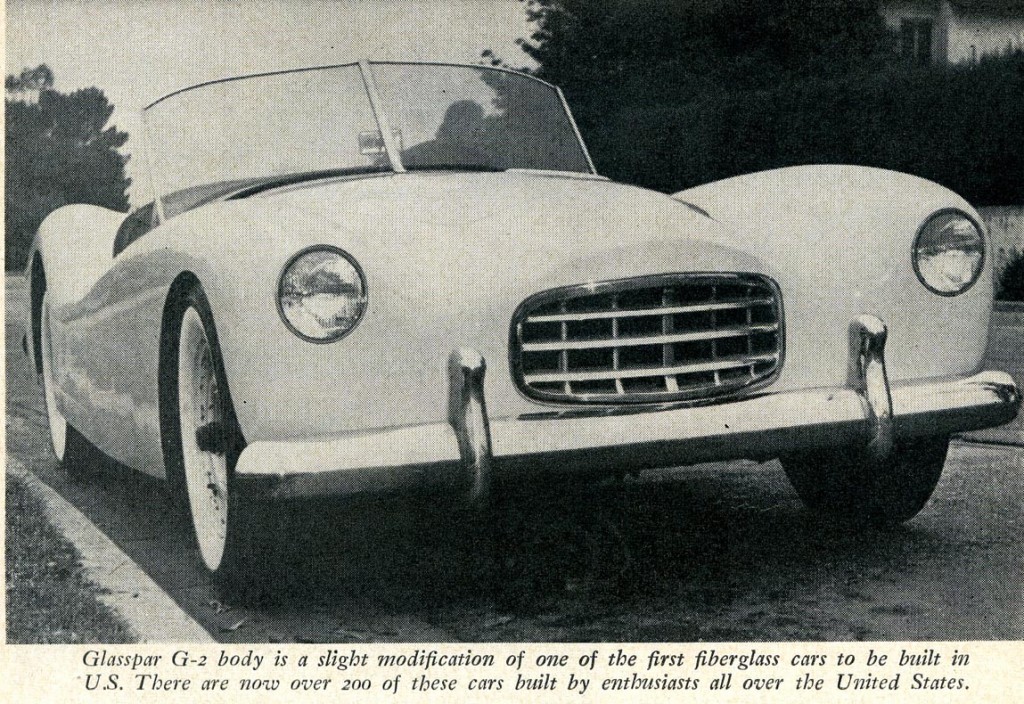
The figure “200” for Glasspar G2’s was corrected by Bill Tritt and Bill Hoover many years ago to 100 cars and kits. Rodney Packwood has confirmed that as well with his serial number analysis of existing G2’s.
Thoughts On The Article:
This is a short article but very important for several reasons as follows:
First… here it was in ’56 and we get a good idea of who’s still around and kicking. All the big companies were mentioned – Glasspar, Woodill, Victress – and none of the new ones show up yet such as Devin, LaDawri, and Kellison.
This was a transition point for the industry and moving from what we characterize as “Generation 1” fiberglass sports cars to “Generation 2” cars which had more volume, documentation for the builder, and sophistication in producing their product and making it available to the public. This may, in fact, be the last article mentioning all of the early companies together and the products they produced in print.
Things were about to change and that would happen in the same year – 1956 – when LaDawri and Devin’s newest product would debut. Followed in ’57 by Kellison.
Second… the article mentions that “some of the firms will build complete cars to the purchaser’s specifications.” What does that mean to you? This means that Glasspar, Woodill, Meteor, Victress, Grantham Stardust, Meteor – heck – all of the companies built factory cars.
Maybe just a few, but when Hugh Jorgensen of Victress association built his S4 – that was a factory car in every way. In fact, we have not found a company that didn’t produce at least 2-3 factory cars – that’s true even for lesser known companies such as Triplex/Chicagoan, Venus, and Rockefeller Yankee.
Third… the article summarizes the state of the industry in ’56 by saying “several hundred of these cars are now on the roads of America…” Fiberglass sports cars of the ‘50s are extremely rare gang. If you add up all the bodies produced by the companies from ’51 to ’56, you get just around 800 bodies.
Now….if we are very generous and say that half of these became cars (400) and are generous again and say that half of these were well-built (200) and are generous one more time and say that 50% of these survived….we come up with about 100 survivors from the ‘50s – which is close to the number of cars in our Forgotten Fiberglass registry.
So…. when someone says to you that their car is rare because it’s only one in a certain color produced in the Fall of the year, with a heater delete, and an FM radio with factory overspray on the manifold – out of just 20,000 produced….sit back and smile. Your fiberglass gem is a custom-built, beautifully designed, made-for-speed sports car which is unique and unlike any other car – even with the same body – built at the time.
You have a “one-off” show car you can be proud of in every way.
Sports Car Body Kit Chart
Check out the cool chart they printed in this article showing wheelbase, tread, overall length, overall width, height at cowl, and height at top. The table even shows prices for semi-complete and complete kits. Prices for a complete car were not shown – these typically were $2500-$4000. It’s also cool to see the names and addresses of the companies.
Summary:
In ’56, I’m sure many young men used the names and addresses provided in the chart above to order brochures and materials and dream about the sports car they wanted to build. Perhaps even some of you ordered these materials using this very article back then.
Hope you enjoyed the story, and until next time…
Glass on gang…
Geoff
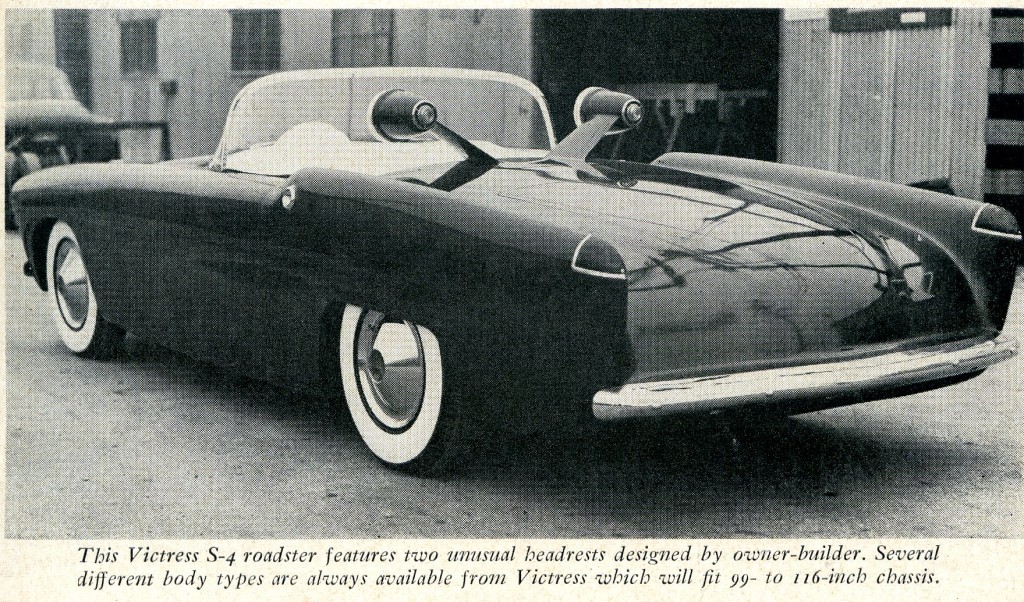
——————————————————————-
Click on the Images Below to View Larger Pictures
——————————————————————-
- The figure “200” for Glasspar G2’s was corrected by Bill Tritt and Bill Hoover many years ago to 100 cars and kits. Rodney Packwood has confirmed that as well with his serial number analysis of existing G2’s.
- Nothing Like Taking Your Sports Car Special Out For A Spin….
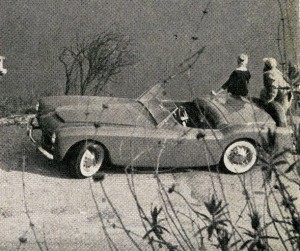
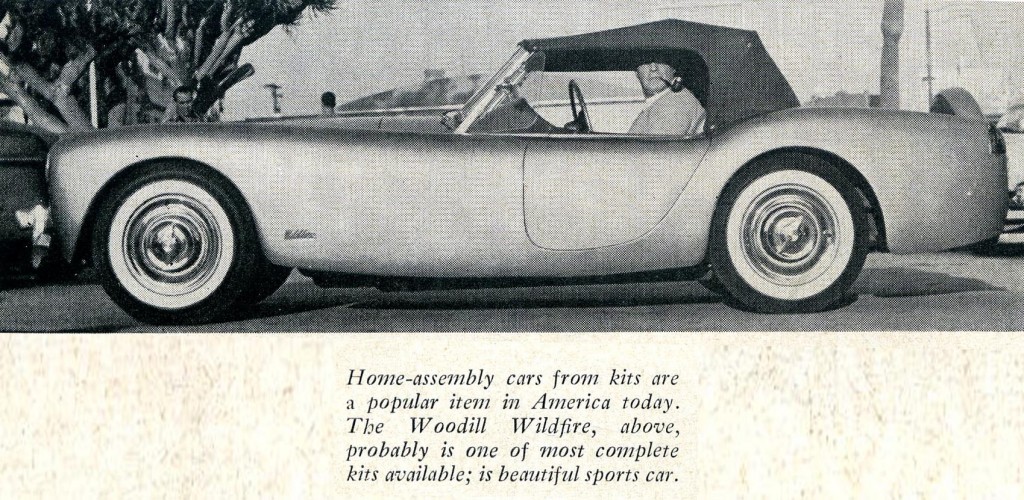
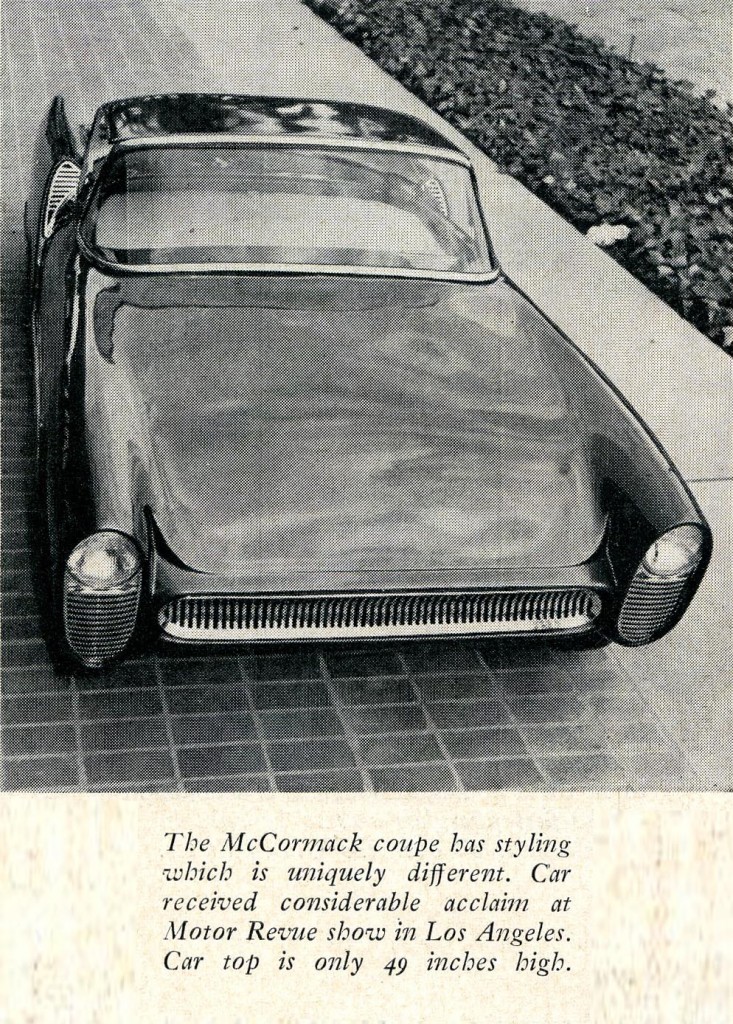
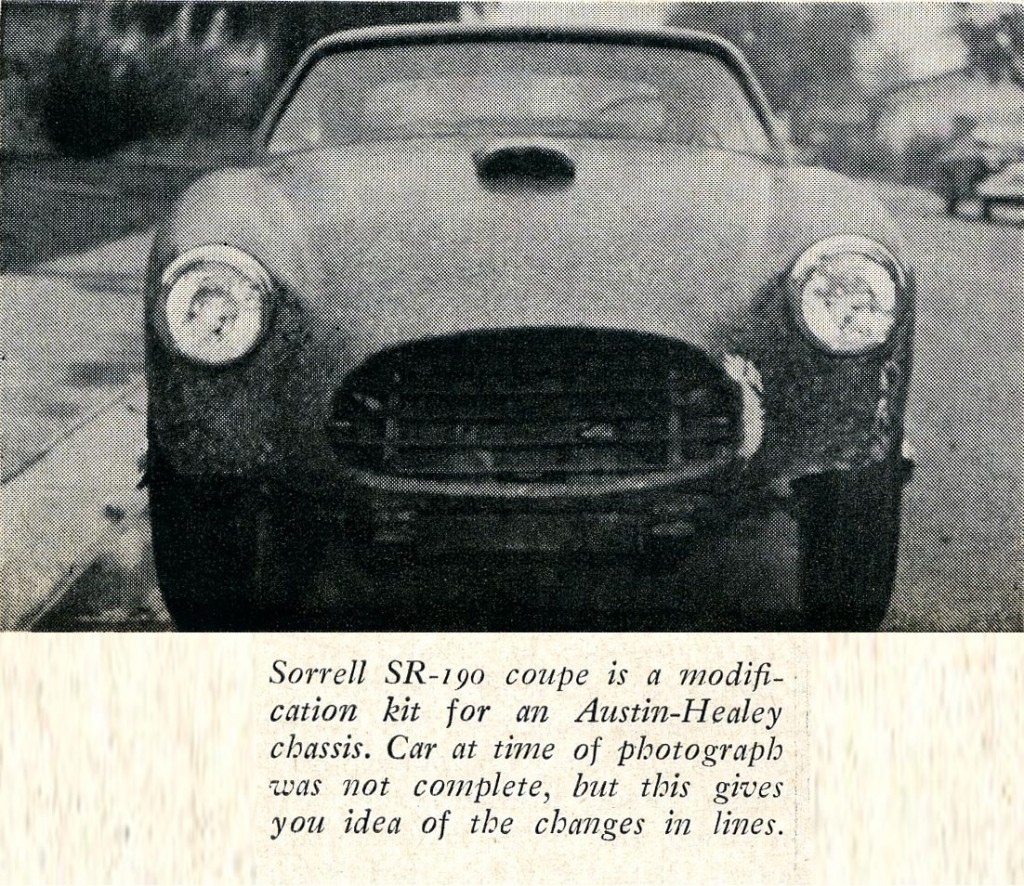
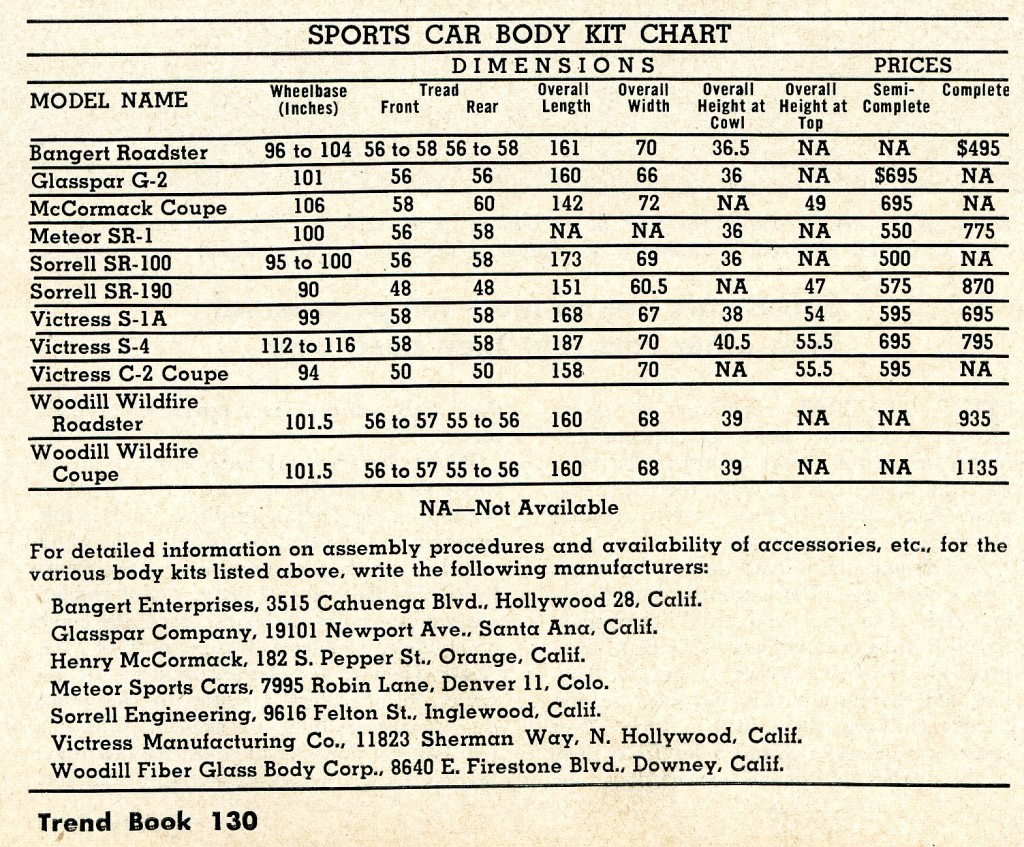
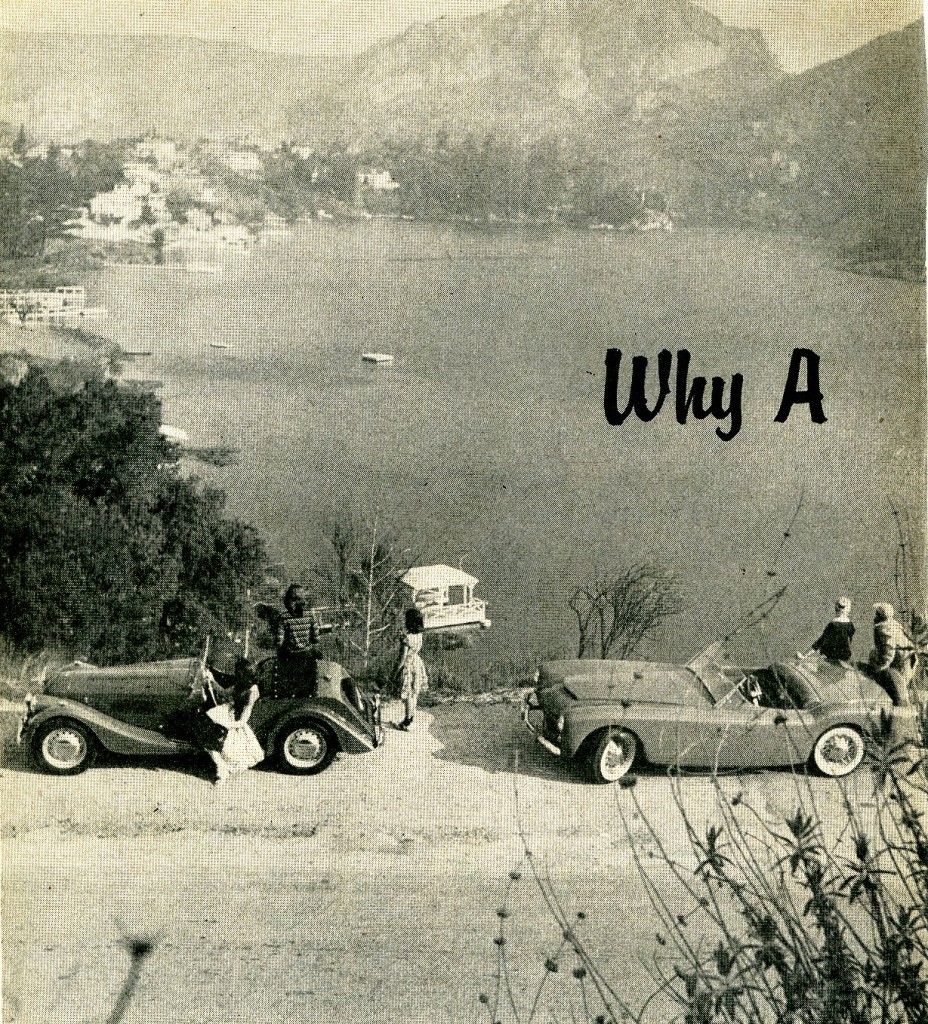















Hi all,
I found your site as I was doing research on this issue of Sports Cars, Trends Books.
I have this exact copy, my dad and I used to thumb through it as he would tell me stories of racing his Porsche Speedsters, and I especially was fond of the Mercedes section as I grew up riding shotgun in his ’59 190 SL.
Needless to say this magazine was something special.
This mag is slightly warn but in quite fair condition and wanted to know if anyone was interested in owning it?
In the pub are sections on racing, racing techniques, and pictures of Masten Gregory, and Phil Hill, the only American-born driver to win the Formula One World Drivers’ Championship.
Have a wonderful afternoon and keep the shiny side up.
Michae
Great story..The Victress at the top was being built by Hugh Jorgensen..I wonder where it is today ???.
Mel
I have one pair of willys areo tail light that i have saved for years,hoping too find a car that cool to put then on.
I just discovered your very interesting site. I remember many of these cars from the 1960s. There were many Devins at The Quail in Monterey in 2009 and they were beautiful.
I still read old issues of Road & Track and see the advertisements for these cars.
Keep up the good work.
This is both a fascinating and an important article.
Fascinating in how it describes the extremely fast growth, maturity and changes to the fledgling fiberglass body/fiberglass factory built automotive industry. This was a time both of early fiberglass bodies, before the “kit car” movement, but also of serious early manufacture of true factory builds, even if very limited production. It was a time of very big dreams!
Fascinating also, however, because it chronicles the early awareness in the U.S. of cars as something more than utilitarian people haulers, but also as objects of fun and sport, around which the huge hobby we know today has emerged.
More important perhaps, is the summary Geoff has so skillfully written in his three points. Go back and re-read point 3. This is a particularly eloquent explanation of what is “rare” and what is truly a one-off, one of a kind, unlike any other. This is what contributes to real value, once recognized.
Fast forward to the upcoming Concours d’ Elegance at Pebble Beach in August next year (2012). The organizers have just announced a special class for Sport Customs of the ’50s which will begin to focus more attention on specialty cars of this period.
As more awareness is brought to the very special cars of this unique time in U.S. automotive history from among the most elite collectors in the world, truly “one-off” fiberglass cars properly restored and documented will become increasingly prized by serious collectors.
The McCormack coupe must be one of my favorite fiberglass cars. That Victress with the headrests is also pretty sleek!
NEAT STORY! I really like the innovative headrests on the Victress! When I looked at the Woodill Wildfire (rear shot) I was trying to figure out what taillights were used – then I read the caption – sharp eye!
the tail lites on the back of the wildfire in this article are like mine 54 willys areo they are real hard to find